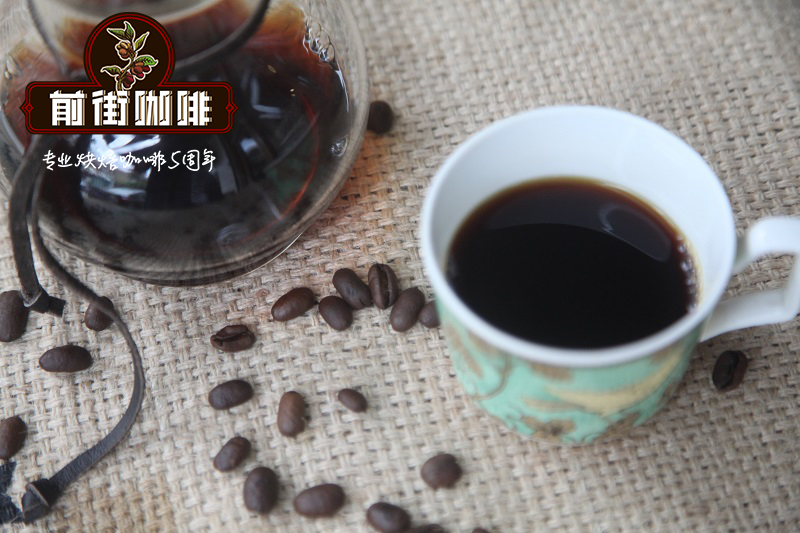Colombian Coffee Story Colombian Coffee grading system Colombian Coffee beans are

Professional coffee knowledge exchange more coffee bean information please follow the coffee workshop (Wechat official account cafe_style)
Coffee beans are named after the country of production or place of origin or port of shipment
It is also marked by subdividing the size or quality of beans, the elevation of the cultivated land and other characteristics.
But
Even coffee of the same name has its taste and aroma.
It will still be due to the harvest year, climate, harvest and other factors.
Or in the refining process is different and different.
In addition, the key degree of baking varies greatly according to the personality of different tastes.
List the characteristics of more familiar brand coffee beans on the basis of new beans (fresh beans)
Brazil Brazil (Santos)
The famous Brazilian Santos refers to the beans shipped from the port of Santos.
The sour taste and bitter taste are so mixed that they become the most commonly used base for mixed beans.
The taste of medium frying is soft and plain.
Deep frying bitterness is stronger.
Brazil, the largest coffee producer in the world
Brazil is the largest coffee producer in the world, so of course we should know more about it. The annual output of Brazilian coffee beans exceeds 30 million bags (60 kg each). Coffee experts do not think highly of their beans, saying that they are too monotonous, bitter, sour and fragrant enough, and are not even included in the list of producing areas of fine coffee. Because most of the Brazilian coffee gardens are below 1200 meters above sea level, there are no shade trees, and the way of picking beans is rough, and the raw and ripe fruits are picked together, which does not meet the conditions of fine coffee. Planting trees with exposure planting method makes the coffee fruit grow faster, so that the flavor development is not complete, and the hardness of beans is insufficient, the acidity of fruit is obviously low, and there is a smell of wood, which can not be elegant. The quality of Brazilian beans is soft, it is obviously not resistant to heat in the baking process, and the baking time should be earlier, otherwise it is easy to be scorched. But Italians have a special preference for soft beans, thinking that Brazilian soft beans are the most suitable for espresso. Their espresso consists of 90% Brazilian beans and 10% robusta beans, which is a match made in heaven. For more than 20 years, Brazil has tried to expand its market share and increase production, but its quality has been affected. The average price of Brazilian beans per pound is 20% lower than that of Colombia, but it is still profitable. In 1998, Vietnam beans were dumped at low prices, and under pressure, the Brazilian government decided to improve the quality and enter the high-end markets in Europe and the United States, so as to increase farmers' income by raising prices, and to wash away Brazil's reputation for not growing good coffee! The Brazilian Coffee Association, established in 1991, is convinced that there are many beautiful farms in the territory, and the quality of coffee is comparable to that of very hard beans at high altitude. therefore, with the assistance of the American Coffee Association, the first Brazilian Coffee Competition Cup of Excellence was held in 1999. The winners can compete openly by international buyers through internet, with satisfactory results, and can encourage coffee farmers to improve the quality of coffee beans. In 2000, the Brazilian Coffee Association expanded to hold the second Cup of Excellence. 477 farms participated in the competition, which was reported all over the world. The top 40 were selected by Brazilian cup testers and then handed over to 24 international coffee experts from 12 countries, including the United States, Japan, Germany and Norway. The Brazilian Coffee Association intends to make use of this activity to wash the name of Brazilian beans under the witness of the international top cup tester! It took 24 cup testers 3 days to evaluate and hold a discussion, and finally selected 18 farms that best represent Brazilian flavor, which were well received than prospective bidders. The Brazilian Coffee Association took advantage of the victory to re-move the "Strictly Soft" coffee, which is the flavor standard set by the Brazilian authorities for authentic Brazilian beans 80 years ago, "the entrance is sweet, pure, and does not bite the throat". Over the past 20 years, coffee has replaced manual picking of beans by mechanization, destroying the flavor of brown beans. Only by picking red ripe fruit and careful bean handling can the tone of "entrance is sweet" be highlighted. Under the guidance of the Brazilian Coffee Association in recent years, farmers have improved significantly! Brazilian coffee producing areas are mainly distributed in three states: Bahia, Minas Gerais and Sao Paulo, in which Minas Gerai production accounts for half of Brazil and plays an important role. Soberg & Hansen, a well-known Norwegian bean baker and raw bean importer, has paid a high price for raw beans from Fazenda Rainha Farm, which is widely discussed in the global coffee industry because Brazilian beans have never had such a high price, which is a big encouragement to the Brazilian coffee industry. The Brazilian government not only improves the image of coffee beans, but also brings unexpected wealth to carefully managed farms, which can be described as both fame and wealth!
Note: Black Frost, a natural coffee tree bacterium that Brazilians still remember, poisoned millions of coffee trees in Brazil in 1975, almost wiping out all coffee trees and causing a sharp rise in global coffee prices.
Colombia Colombia
Bean grains are obviously divided into large grains and small grains.
Beans with this name mostly use large grains.
It has a sour taste and a strong taste.
Deep fried beans have strong taste and obvious taste.
Colombia is the world's second largest producer of Alabica coffee after Brazil, and the output of washed Arabica beans is the highest in the world. Local coffee is grown at an altitude of 8 to 1900 meters above sea level, mainly in the mountains of the Midwest; today, it has expanded to the northeast and southwest. Coffee production was reduced a few years ago as a result of the collapse in coffee prices, so the quality of coffee has been relatively unstable in recent years, but the Supremo and Excelso exported by Colombia are still one of the necessary recipes for many mixed coffees. The birth season in Colombia varies from October to December in the west and north and from April to June in the south.
Colombia is the fourth largest country in South America, but it is the only country whose territory connects the Atlantic and Pacific oceans. The Midwest has three longitudinal mountains that form a high-altitude region of the country, and the three mountains form a group in southern Colombia that runs through the border to Ecuador, the famous Andes. Compared to the towering west, the eastern half is a vast plain and Amazon jungle. Colombia is the third most populous country in Latin America, after Brazil and Mexico. A large number of rural people flocked to the cities. The proportion of urban population rose from 57% in 1951 to 74% in 1994. Thirty cities have a population of more than 100000. The nine eastern lowland provinces account for 54 per cent of Colombia's area, but only less than 3 per cent of the population, with a population density of less than one person per thousand square metres. For decades, the country has been divided by armed guerrillas who lost their weapons after the collapse of the Soviet Union, so they grew marijuana and the drug trade in exchange for armaments. Oil and coffee are Colombia's two major sources of economy.
Important Notice :
前街咖啡 FrontStreet Coffee has moved to new addredd:
FrontStreet Coffee Address: 315,Donghua East Road,GuangZhou
Tel:020 38364473
- Prev

Characteristics of Rwandan coffee beans? Is it bourbon? Which tastes better, sunburn or water washing in Rwanda?
Coffee world map characteristics of coffee beans in Rwanda? Is it bourbon? Which tastes better, sunburn or water washing in Rwanda? Rwandan coffee is the most popular African coffee after Kenya and Ethiopia. But unlike the two famous countries, it does not have a long history of planting, let alone native varieties everywhere in the wild. This small African country is a fire Phoenix that has been reborn. Rwanda
- Next

Starbucks Columbia Coffee beans taste and Colombian Coffee History Colombian Coffee Story
Professional coffee knowledge exchange more coffee bean information please pay attention to the coffee workshop (Wechat official account cafe_style) Colombian coffee has many different flavors, thick solid, chocolate, fruit, jam-like sweetness, there are great differences among different producing areas. Historical Colombian coffee was probably introduced by Jesuit monks in the 18th century and did not begin until the end of the 19th century.
Related
- Detailed explanation of Jadeite planting Land in Panamanian Jadeite Manor introduction to the grading system of Jadeite competitive bidding, Red bid, Green bid and Rose Summer
- Story of Coffee planting in Brenka region of Costa Rica Stonehenge Manor anaerobic heavy honey treatment of flavor mouth
- What's on the barrel of Blue Mountain Coffee beans?
- Can American coffee also pull flowers? How to use hot American style to pull out a good-looking pattern?
- Can you make a cold extract with coffee beans? What is the right proportion for cold-extracted coffee formula?
- Indonesian PWN Gold Mandrine Coffee Origin Features Flavor How to Chong? Mandolin coffee is American.
- A brief introduction to the flavor characteristics of Brazilian yellow bourbon coffee beans
- What is the effect of different water quality on the flavor of cold-extracted coffee? What kind of water is best for brewing coffee?
- Why do you think of Rose Summer whenever you mention Panamanian coffee?
- Introduction to the characteristics of authentic blue mountain coffee bean producing areas? What is the CIB Coffee Authority in Jamaica?

